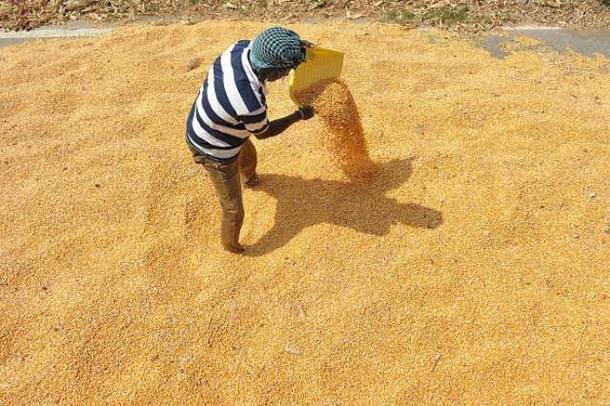Ideas
Crop Insurance Tweak Successful, But More Needs To Be Done
Shivkumar Chandrashekhar
Jan 11, 2018, 01:18 PM | Updated 01:17 PM IST
Save & read from anywhere!
Bookmark stories for easy access on any device or the Swarajya app.


A major reform in the farm sector that has been successfully implemented by the incumbent government is the Fasal Bima Yojana or the crop insurance scheme. Crop insurance though is really not a new. In fact, the original crop insurance scheme was introduced in 1972 by the Life Insurance Corporation of India on cotton farmers in Gujarat. The programme was later taken over by the General Insurance Corporation (GIC) of India that expanded the coverage to other crops.
Since then crop insurance programme has gone through a continuous series of tweaks for escalating coverage. The objective of introducing the scheme and series of tweaks to crop insurance was to mitigate farm distress due to crop losses and subsequent impact on income. In fact, the major adjustments to the project were carried out in 1999-2000 when the National Agriculture Insurance Scheme was introduced. That tweak then envisaged coverage of the programme had adopted an area approach.
However, if the original objective was to insulate farmers from crop losses and subsequent financial distress, clearly, the area based approach appeared to have failed. Area approach indemnity to farmers is made at a uniform rate without factoring the individual losses suffered. The failure was partly due to the fact that notifications of calamities are determined by the state governments. So essentially what appears to have occurred was that state governments were slow to respond to calamities like drought and floods. Consequently, it led to crop losses that resulted in farmer debt and distress.
But it was not the crop losses alone that contributed to farmers’ agony. Most of the coverage was restricted to farmers who had availed of bank loans, or loanee farmers. The loanee farmers were compulsorily covered and the sum assured was the loan amount availed from the financial institutions. This ensured that the impact in the event of crop losses on the farmers was minimal or none.
Non-loanee farmers or farmers who were unable to get bank loans though were outside the coverage. But non-loanee is essentially a misnomer. This is because non-loanee farmers are those that have availed of financial assistance through the unorganised financiers. They included tenant farmers and sharecroppers. Unorganised financiers include money lenders and chit funds that provide direct cash assistance at very high rates of interest. In addition there are also other credit based suppliers of farm needs that include traders of fertilisers, pesticides and renters of implements including tillers where hire charges are by the hour. So it was hardly surprising that suicides were almost entirely among non-loanee farmers. At least 350,000 farmers across the country have committed suicide unable to repay their debts.
It was to address that kind of distress that the crop insurance underwent one more change to acquire its new avatar - the Pradhan Manthri Fasal Yojana introduced in 2016. This scheme is based on the crop yields. So if crop yields fall below the threshold yields, based on a seven-year moving average, the farmers would be entitled to making claims. Unlike in the past, the new scheme now removed the subsidy limits. In the original crop insurance scheme, the premiums were capped to contain the subsidy outflows from the Centre and state governments. These limits were removed and farmers were entitled to compensation of full claims against crop losses.
Another flaw that has been corrected is the coverage of tenant farmers. In India, especially parts of central and northern regions, the vast majority of small farmers were essentially tenant farmers. Tenant farmers or share croppers though would still need to provide evidence in the form of a sharing or tenancy agreement for availing crop insurance. Premiums for the new crop insurance scheme range from 1.5 per cent to 2 per cent of sum assured for kharif and premium. For horticulture crops, the premiums are as high as 5 per cent of the sum assured. The risks covered include weather related calamities, including frost and temperature fluctuations.
Moreover, in the past, the sole agency for implementing crop insurance was the Agriculture Insurance Company of India (AICI). Despite those limitations, AICI has managed to make India the third largest farm insurance market in the world extending risk coverage to 37 lakh farmers. Still a single agency was hard pressed in meeting the demands of the entire farm sector. Other insurers were therefore included. Effective from 2017, 18 insurers including the public sector and private sector companies have been mobilised to implement the scheme.
The results have so far this year been excellent, to say the least. At least one public sector insurance company, United India Insurance company has reported claims rate of only 80 per cent or Rs 1,300 crore during the kharif and 75 per cent during the rabi or Rs 600 crore during the last year, despite 2017’s unfavourable weather conditions, natural calamities and drought conditions in parts of Kerala. The losses were far lower than motor insurance, where claims are in excess of 150 per cent. This implied that insurers in the motor sector were paying out claims more than the premiums collected, translating to underwriting losses.
Underwriting agriculture was profitable for the insurance companies. But insurers’ capital and tight solvency regime remain major constraints for taking in more risks despite the underwriting profits in the sector. It is to overcome the regulatory regime that insurers have entered into reinsurance arrangements with the GIC of India, the national reinsurer. Reinsurance means that primary insurers cede their risks or sell their liabilities to the reinsurer in exchange for a commission. Given the underwriting profits, insurers have actually earned substantial commission from reinsurers through this ceding mechanism.
Yet the reality is that phenomenal success of the crop insurance programme through increased farm sector outreach would not have been possible without fiscal support. The costs of crop insurance are borne by both the Centre and the states. Subsidies from the Centre for expanded crop insurance coverage have increased. This year, the subsidy outgo is estimated at Rs 9,000 crore, three times more than the figure in 2015-16. Presently, crop insurance coverage is 30 per cent of the farm sector. The proposal is to raise the coverage to 50 per cent to 2018-19 to mitigate farmers’ income risks. Clearly, fiscal fundamentalist regime of the past has not been allowed to prevail. After all, ‘Jai Kisan’ is the first line of economic security.
Shivkumar is a finance writer with over 30 years of experience in journalism from various publications and as a trader in foreign exchange from one of the most reputed broking companies. He now pursues his passion, wildlife photography and farming based out of Kotagiri in the Nilgiris district of Tamil Nadu.





